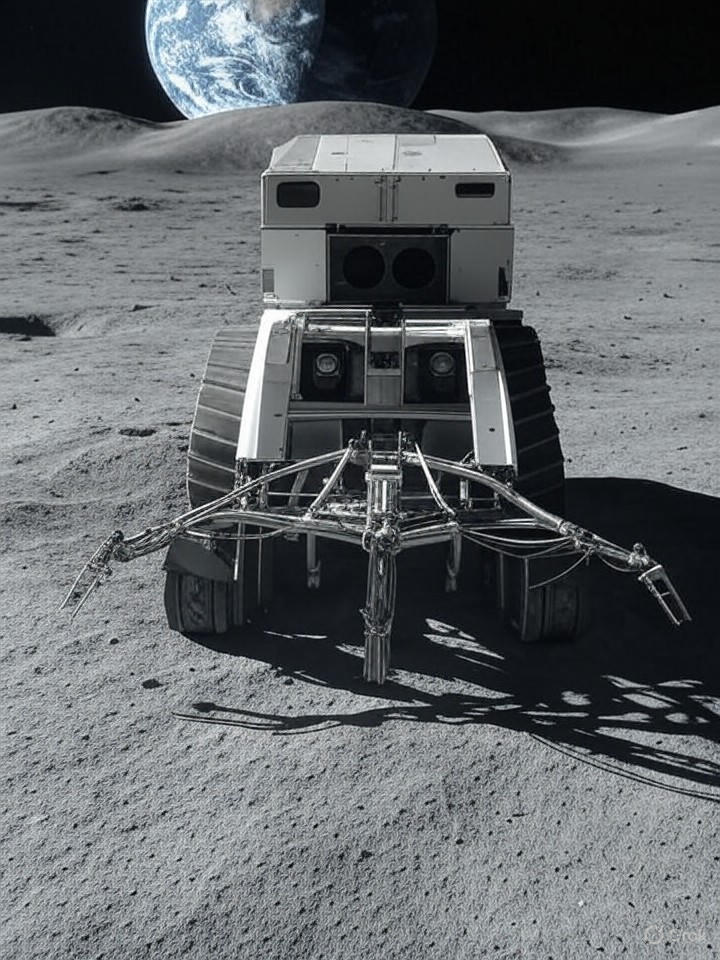Science
Interlune Pursues Lunar Helium-3 Mining by 2028 for Fusion Energy

A pioneering mining company, Interlune, has announced the discovery of helium-3 deposits on the lunar surface, aiming for commercial extraction by 2028. This rare isotope, which holds the potential to revolutionize industries ranging from clean energy to quantum computing, has generated significant interest as nations and private firms look to capitalize on the moon’s resources.
Interlune claims to have identified these valuable reserves using advanced surveying techniques. Helium-3 is notable for its abundance in lunar regolith, a result of billions of years of exposure to solar wind. Unlike the more common helium-4, helium-3 is non-radioactive and ideal for use in nuclear fusion reactors, offering a promising path to sustainable energy solutions. Industry experts estimate helium-3’s value at approximately $20 million per kilogram, driven by its demand in high-tech applications.
Geopolitical Context of Lunar Resource Extraction
The announcement comes as global competition intensifies, particularly between the United States and China, both seeking to establish dominance in lunar resource extraction. According to a report by Space.com, Interlune’s initiatives align with broader efforts to secure helium-3 for use in quantum computing, where it is essential for maintaining ultra-low temperatures.
Interlune has already initiated agreements to supply up to 10,000 liters of helium-3, signaling early market confidence in its capabilities. The company recently revealed a prototype harvester designed to process 110 tons of lunar soil per hour, as highlighted by coverage from The Washington Post. This machinery addresses the logistical challenges of lunar operations, including extreme temperatures and the lack of atmosphere, while aiming to minimize environmental disruption on the moon.
Technological Innovations and Future Challenges
Beyond its energy applications, helium-3 is also valuable in medical imaging and supercomputing, where its scarcity on Earth has driven prices higher. As noted in Forbes, Interlune is investing in robotic systems for autonomous mining operations, which could become operational by 2028. This timeline aligns with NASA’s Artemis program and China’s Chang’e missions, both of which could provide essential infrastructure for transporting and processing materials.
Although challenges remain, including the high costs of space travel and the economic viability of returning materials to Earth, proponents argue that utilizing lunar resources for habitat construction and fuel depots could mitigate expenses. Insights from Interesting Engineering indicate that global powers view helium-3 as “moon gold,” with Russia also entering the competition, potentially altering global energy dynamics.
Financially, Interlune is attracting significant investment, with plans to deploy multispectral cameras for precise resource mapping, as reported by Autoevolution. The company’s partnership with quantum cryogenics firm Bluefors represents one of the largest contracts in the space resource sector to date, emphasizing the critical role helium-3 plays in advancing computational capabilities.
Ethical considerations regarding equitable access to lunar resources under the Outer Space Treaty arise amidst this rush for extraction. Critics express concerns about a new colonial era in space, while supporters, including voices from the European Space Agency (ESA), argue for shared technological advancements, such as safer fusion energy solutions that could help combat climate change.
As Interlune pushes forward, successful helium-3 mining could catalyze a broader space economy, potentially enabling the extraction of water ice, rare earth elements, and oxygen from lunar soil. Insights from the 21st Century Tech Blog suggest that this development could support permanent lunar settlements, reducing reliance on Earth-sourced resources.
For industry stakeholders, the ability to scale Interlune’s prototypes will be crucial. If successful, the venture could attract billions in investment, transforming the moon from a scientific frontier into a profitable domain. The implications of this lunar initiative could represent a significant shift in how humanity approaches resource extraction beyond Earth, bringing the dream of harnessing cosmic resources closer to reality.
-

 Science3 weeks ago
Science3 weeks agoIROS 2025 to Showcase Cutting-Edge Robotics Innovations in China
-

 Politics3 weeks ago
Politics3 weeks agoJudge Considers Dismissal of Chelsea Housing Case Citing AI Flaws
-

 World3 weeks ago
World3 weeks agoBravo Company Veterans Honored with Bronze Medals After 56 Years
-

 Lifestyle3 weeks ago
Lifestyle3 weeks agoStone Island’s Logo Worn by Extremists Sparks Brand Dilemma
-

 Health3 weeks ago
Health3 weeks agoStartup Liberate Bio Secures $31 Million for Next-Gen Therapies
-

 Health3 weeks ago
Health3 weeks agoTop Hyaluronic Acid Serums for Radiant Skin in 2025
-

 Top Stories3 weeks ago
Top Stories3 weeks agoIndonesia Suspends 27,000 Bank Accounts in Online Gambling Crackdown
-

 World3 weeks ago
World3 weeks agoHoneywell Predicts Record Demand for Business Jets Over Next Decade
-

 Sports3 weeks ago
Sports3 weeks agoMel Kiper Jr. Reveals Top 25 Prospects for 2026 NFL Draft
-

 Lifestyle3 weeks ago
Lifestyle3 weeks agoMary Morgan Jackson Crowned Little Miss National Peanut Festival 2025
-

 Sports3 weeks ago
Sports3 weeks agoYamamoto’s Mastery Leads Dodgers to 5-1 Victory in NLCS Game 2
-

 Politics3 weeks ago
Politics3 weeks agoNew Jersey Voters Urged to Register Ahead of November Election








